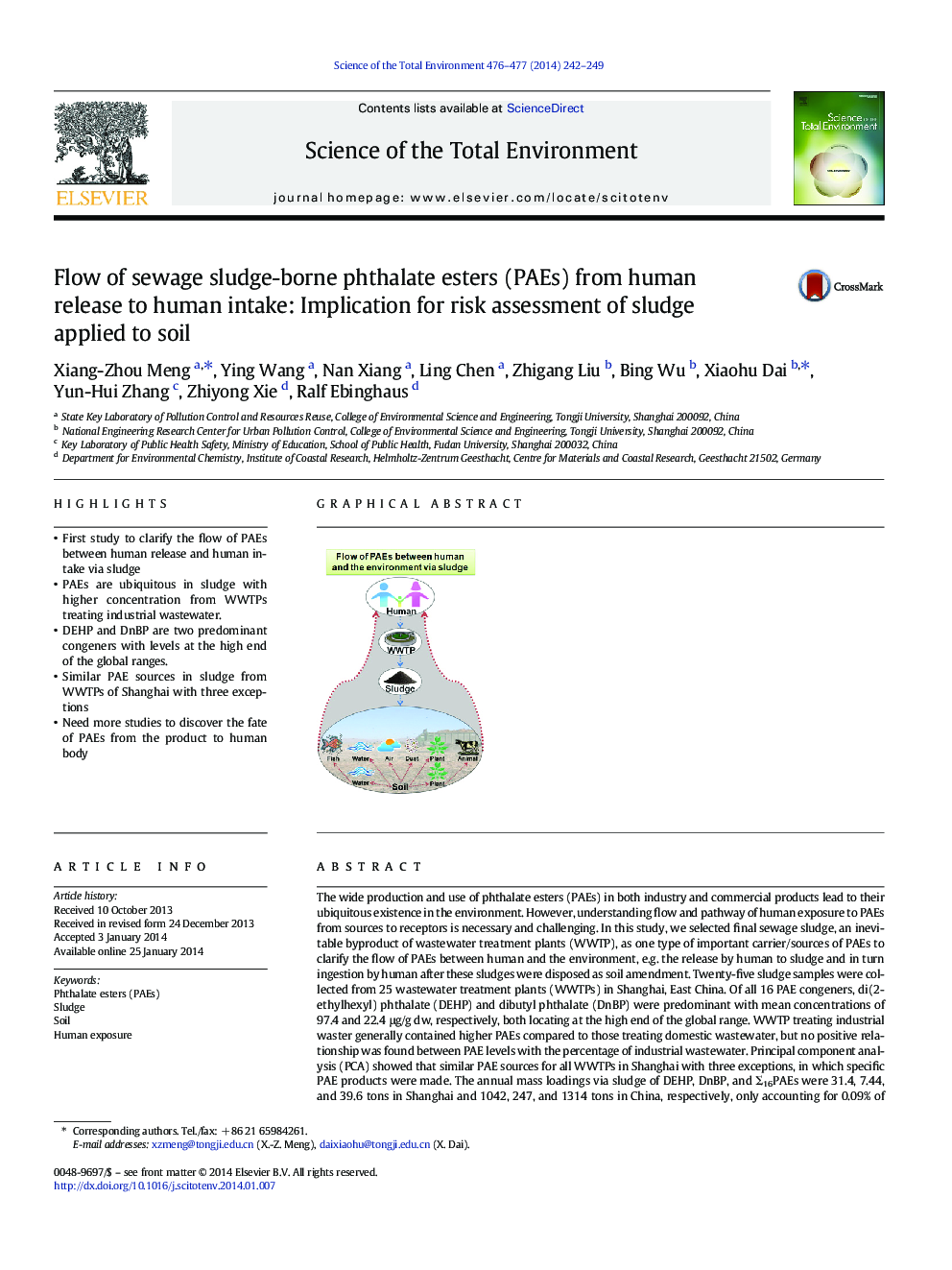| کد مقاله | کد نشریه | سال انتشار | مقاله انگلیسی | نسخه تمام متن |
|---|---|---|---|---|
| 4428539 | 1619789 | 2014 | 8 صفحه PDF | دانلود رایگان |

• First study to clarify the flow of PAEs between human release and human intake via sludge
• PAEs are ubiquitous in sludge with higher concentration from WWTPs treating industrial wastewater.
• DEHP and DnBP are two predominant congeners with levels at the high end of the global ranges.
• Similar PAE sources in sludge from WWTPs of Shanghai with three exceptions
• Need more studies to discover the fate of PAEs from the product to human body
The wide production and use of phthalate esters (PAEs) in both industry and commercial products lead to their ubiquitous existence in the environment. However, understanding flow and pathway of human exposure to PAEs from sources to receptors is necessary and challenging. In this study, we selected final sewage sludge, an inevitable byproduct of wastewater treatment plants (WWTP), as one type of important carrier/sources of PAEs to clarify the flow of PAEs between human and the environment, e.g. the release by human to sludge and in turn ingestion by human after these sludges were disposed as soil amendment. Twenty-five sludge samples were collected from 25 wastewater treatment plants (WWTPs) in Shanghai, East China. Of all 16 PAE congeners, di(2-ethylhexyl) phthalate (DEHP) and dibutyl phthalate (DnBP) were predominant with mean concentrations of 97.4 and 22.4 μg/g dw, respectively, both locating at the high end of the global range. WWTP treating industrial waster generally contained higher PAEs compared to those treating domestic wastewater, but no positive relationship was found between PAE levels with the percentage of industrial wastewater. Principal component analysis (PCA) showed that similar PAE sources for all WWTPs in Shanghai with three exceptions, in which specific PAE products were made. The annual mass loadings via sludge of DEHP, DnBP, and Σ16PAEs were 31.4, 7.44, and 39.6 tons in Shanghai and 1042, 247, and 1314 tons in China, respectively, only accounting for 0.09% of the total consumption of PAEs in China. If this sludge is applied in soil, human will take 16.4 and 3.8 μg/kg bw for DEHP and DnBP every day, respectively, via dietary and soil ingestion, which were lower than the toxicological safety parameters. To the best of our knowledge, this is the first report to analyze the flow of sludge-borne PAEs from human release to human intake.
Figure optionsDownload as PowerPoint slide
Journal: Science of The Total Environment - Volumes 476–477, 1 April 2014, Pages 242–249